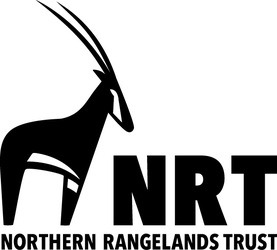Details
- http://www.nrt-kenya.org/
- Mike Harrison
- P.O. Box Private Bag 60300
- Isiolo
- Kenya
Contact information
- info@nrt-kenya.org
-
+254 (0) 64 31405
NRT – Our Commitment to Change
In the harsh environment of northern Kenya, pastoralist communities struggle with frequent droughts, poor health care, sparse government services and the threats posed by cattle rustling and ivory poaching. At the same time, ethnic rivalries continue to hinder development and disrupt lives. However, all this is beginning to change, thanks to a new movement based on community conservation
How NRT works
NRT was established in 2004. Its mission is to develop resilient secure peace and conserve natural resources. It does this in a number of ways. It raises funds for the conservancies. It provides them with advice on how to manage their affairs. It supports a wide range of training and helps broker agreements between conservancies and investors. It also monitors performance, providing donors with a degree of oversight and quality assurance.
NRT’s highest governing body is the Council of Elders. The chairs of the conservancies make up the majority, and are joined by institutional members representing county councils, local wildlife forums, the Kenya Wildlife Service and the private sector. The Council guides NRT policy and is responsible for drawing up the bylaws for its operation and administration. It also appoints eight of the 15-member Board of Directors, to whom the chief executive officer is answerable.
NRT is now widely seen as a model of how to support community conservancies. Its success has helped shape new government regulations on establishing, registering and managing community conservancies in Kenya.
The role of community conservancies
By the end of 2014, 27 community conservancies, operating under the umbrella of the Northern Rangelands Trust (NRT), were managing over 30,000 km² of land and safeguarding the future of a wide range of species, from elephant to Grevy’s zebra, from the endangered hirola to rhinoceros. With more than 60% of Kenya’s wildlife living outside formally protected areas, community conservancies will assume ever greater importance.
Impact on Wildlife, Environment and Livelihood
The conservancies have brought about significant improvements in rangeland management and helped to stabilize, and frequently increase, wildlife populations. The area of land with significant biodiversity under improved conservation management increased from 5,400 km² in 2008 to over 27,400 km² in 2013. Conservancy rangers, supported by NRT, are play¬ing a significant role in tackling ivory poaching and other wild¬life crimes. Just as importantly, the conservancies have helped to bring peace and security to areas which have been plagued by violent conflict.
With the help of NRT, the conservancies created over 800 per¬manent jobs, and a further 830 casual jobs, in 2013, and im¬proved the welfare of a significant proportion of the 320,000 people whom they serve. They have generated millions of dol¬lars of investment, brought much-needed services to remote areas – for example, over 1,810 young people benefited from school and university bursaries in 2013 – and helped to change the mindsets of marginalized communities, who are now in¬creasingly willing to take charge of their own destinies.
